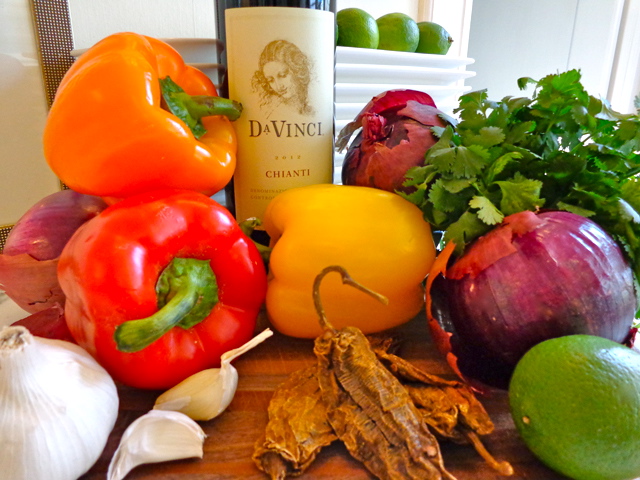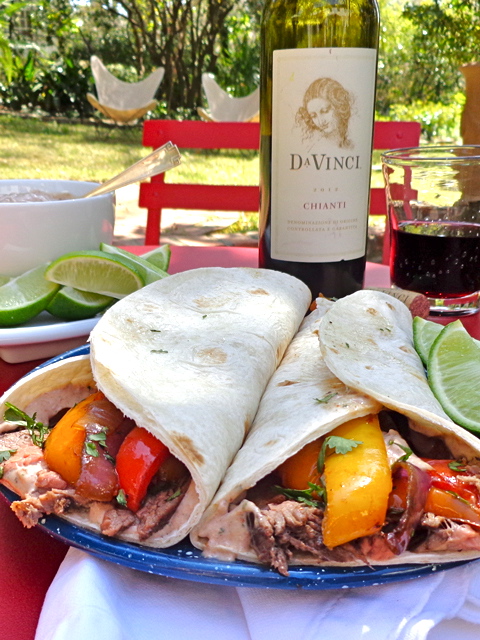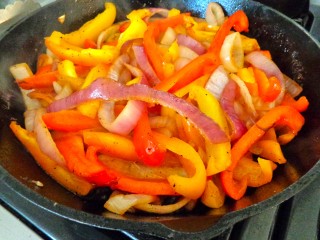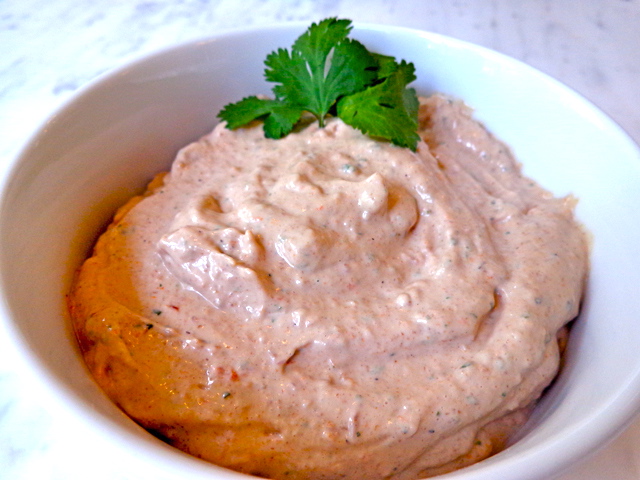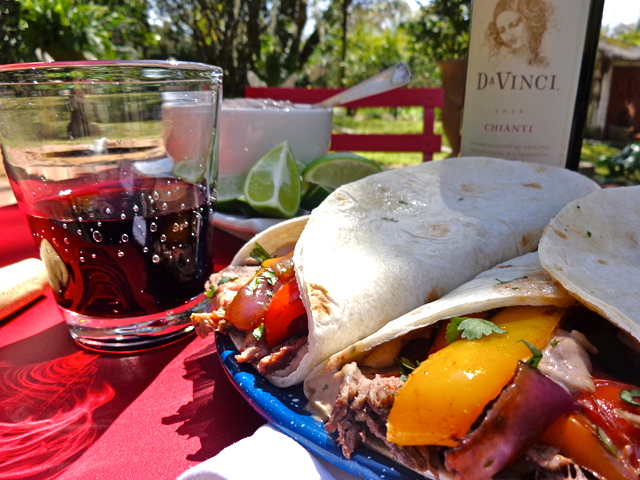DaVinci Wine has contacted me about doing a series of themed blog posts, Chianti at Home, with recipes for them about how my 2012 DaVinci Storyteller Experience in Italy has seeped into my cooking.
More specifically: “DaVinci is inviting select Storyteller Experience Alumni back and asking them, with the benefit of distance and time, how they now enjoy DaVinci Chianti in their home. Will we see Chinese? French? A nouveau American creation of their own making? Stay tuned to see how far from Italy a fine Italian Chianti can stray and still make you say ‘Bravo!’”
What a delicious idea—and challenge! I’d like to take it a step further than “Bravo!” though. I’d like to make you exclaim, “Buonissimo!”—“Mouth-wateringly delicious!”
Chianti at Home conjures images of being a “Christopher Columbus in the Kitchen,”—seeing how I can explore by using the extremely famous Tuscan wine, Chianti, as my guide.
I really connect with this idea, because when I teach cooking classes, inevitably, I am asked, “Mark , do you always cook Italian at home?”
And my answer is always, “Sì!”
However, there is a big caveat to that “Yes!” After all, America is a land of immigrants and our cuisine reflects influences from across the globe: Germany, Ireland, Poland, Mexico, France, Greece, England, a wide range of Asian nations, to name a few—and of course, Italy too. So as an American, I like to cook and eat a wide variety of cuisines.
“But why do you answer ‘Sì!’ if you don’t cook strictly Italian at home?”
The caveat: After my time in Viterbo living/cooking with Nonna and Alessandra, plus my short time in Vinci with Ana and the experts at Cantine Leonardo da Vinci (thanks to DaVinci Wine), I now approach cooking, regardless of a dish’s origin, with an Italian mindset:
-Use the freshest ingredients possible (Cook in season)
-Keep your ingredient list minimized and focused (Quality outshines quantity)
-Home cooked meals reign supreme (Bring your family to the table and change a life one meal at a time!)
So … “Yes!” I do cook Italian all the time—from chili to stroganoff to gumbo to stir-fry to burgers on the grill, and more!
[colored_box title=”TWO ABSOLUTE CRITERIA I FOLLOW WHEN COOKING WITH WINE:” variation=”wheat”]1. DRINKABILITY: You should only cook with a wine that you enjoy drinking. NEVER use “cooking wine,” because it is high in sodium and low in flavor. 2. COST: Cook with a wine that you can afford. Using a reasonably priced wine in a recipe makes more economical sense than dumping a $100 bottle of wine into a pot. (I mean, I adore cooking with wine, but I’m not made of money!)[/colored_box]
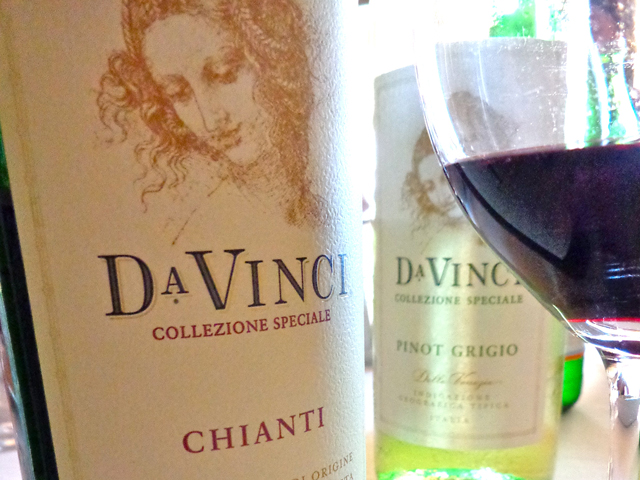
DaVinci Wines hit the mark on both counts—deliciously complex flavor and a great price-point. You can pour a glass into a recipe and pour a second for yourself to enjoy, and never feel guilty of wasteful extravagance.
Developing a recipe is like an expedition. You start with an initial idea of where to begin (“red wine pairs best with beef”) and then you see where that idea leads. Here is what I know (have experienced) about beef and wine while traveling and cooking in Italy:
-Nonna often marinated meat, particularly a beef roast, in wine and garlic. (Tenderizing a tougher cut of meat (cheaper than premium cuts of steak) in a marinade before cooking gives it tremendous flavor, and it is easy on the wallet too. Italian grandmothers are notoriously frugal!)
-While in Vinci, which is just west of Florence, Italy, I enjoyed the famous “Bistecca Fiorentina”—a Flintstone-sized cut of meat that is grilled to rare and seasoned with salt, pepper, and olive oil. Watch the carving video!
-Sautéed onions and peppers are a classic Italian combination of vegetables, particularly when paired with seared/grilled meat. Food in Italy is about blending flavors.
-At the Cantine Leonardo da Vinci, I learned that Chianti is a blended wine, meaning it is made from more than one variety of grape. DaVinci’s Chianti is a blend of 90% Sangiovese grapes and 10% Merlot grapes. Check out my wine tasting experience at the Cantine!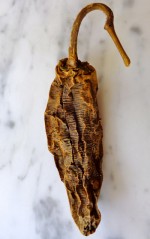
Hmm, let’s see: a wine with complex flavor as the marinade, flank steak, a grill, and sweet vegetables.
I just need a little spicy heat (nothing too crazy!) and maybe some smoky undertones to give it an American-sized kick. Chipotle chiles, introduced to American cuisine by our neighbors to the south, should do the trick.
Therefore, in the spirit of DaVinci’s challenge, and with Cinco de Mayo right around the corner, I’m using Chianti at Home to take us to the land of Tex-Mex for my “Skillet Chianti Fajitas with Spicy Chianti Chipotle Sauce.”
Buon Appetito, pardner~
Mark
*Hurry, now is YOUR chance to become one of DaVinci Wine’s 2014 Storytellers. Let DaVinci send you to Vinci, Italy, to inspire your creativity while exploring their wine, vineyards, and the Tuscan countryside alongside their welcoming staff—for details, apply online!
*Like DaVinci Wine on Facebook to see how other DaVinci Storyteller Alumni use “Chianti at Home” or to share your favorite Chianti-paired recipe. Food is a communal event ~ let’s get social!
Skillet Chianti Fajitas with Spicy Chipotle Chianti Sauce
This recipe takes Tuscany’s famous Chianti wine south to Texas by marinating beef in a flavor-packed pairing of garlic with DaVinci’s Chianti’s “intense aromas of ripe fruit,” while the sauce joins the chipotle’s spicy, medium heat and smoky, chocolate overtones with the Chianti’s flavors of “fresh strawberry and plum.” Tuscan goes Tex-Mex ~ Buon Appetito, y’all!
1 flank steak, about 2 pounds (skirt steak or London broil may be substituted)
1 cup DaVinci Chianti wine
2 large garlic cloves, peeled and smashed
1/2 teaspoon red pepper flakes
3 bell peppers: 1 red, 1 yellow, 1 orange (any color combination, including green, may be substituted), cored, seeded, and cut lengthwise into 1/2-inch-wide strips
2 medium red onions (yellow may be substituted), peeled, cut into 1/2-inch-thick slices, separated into rings
Extra virgin olive oil
Kosher salt
Freshly ground black pepper
12 flour tortillas, 6- to 8-inch diameter, wrapped in foil and warmed in oven or on grill
1 recipe Spicy Chipotle Chianti Sauce (see separate recipe below)
Chopped fresh cilantro for garnish
Lime wedges
To marinate:
In a gallon-sized, re-sealable plastic bag, add the steak, wine, garlic, and red pepper flakes. Seal the bag, removing as much air as possible, and gently “mix” the ingredients together by turning and shaking the bag. Place the bag on a plate or platter, and place in the refrigerator to marinate for at least three hours, or for as long as all day (up to 24 hours). Turn the bag over occasionally so the marinade moves around the steak. [If preparing last minute, marinate the steak at room temperature for one hour, gently turning and shaking the bag every 15 minutes.]
To prepare:
Place a large cast iron skillet (#10 or #12) into a cold oven and preheat the oven to 450 degrees. (If you wish, you may omit the skillet, and grill the steak outside directly over high heat on a charcoal or gas grill.)
While the oven comes to temperature, take the platter from the fridge, and remove the steak from the marinade, reserving the marinade to make the sauce. Use paper towels to pat the steak dry. Place the steak back on the platter and allow to come to room temperature. [Now is when you should prepare the Spicy Chipotle Chianti Sauce using the reserved marinade.]
Place the bell peppers and onions into a large bowl, drizzle with olive oil, season well with salt and black pepper, and toss until coated. Set aside.
Just before cooking, liberally season both sides of the steak with salt and black pepper. Place the steak in the hot skillet and cook in the oven for 5 minutes. Turn the steak over and return to the oven to cook another 4 minutes for medium-rare, or until done to your liking (e.g., 6 minutes each side for medium). [Note: If grilling outside, the timing should be the same when cooking over high heat.] Transfer the steak to a cutting board and allow to rest while you cook the vegetables. Turn the oven off.
With the steak removed, place the same, very hot, cast iron skillet on the stovetop over high heat, add the peppers and onions, cooking until they are soft and lightly browned with some char marks, stirring occasionally—about 6 to 10 minutes. Turn the heat off under the skillet and set aside. Meanwhile, place the foil wrapped tortillas into the oven and let them warm in the residual heat of the cooling oven. [If grilling, use a vegetable grill pan to cook the onions and peppers; place the wrapped tortillas to warm on the grill.]
To serve, cut the steak on the diagonal against the grain into thin slices. Spread a heaping tablespoon of the Spicy Chipotle Chianti Sauce across the surface of a warmed tortilla; add slices of steak, peppers and onions. Garnish with cilantro, and fold up. Repeat with remaining tortillas. Serve any remaining sauce on the side as an accompaniment.
Makes 12 tortillas: 6 servings.
[fancy_box]  NOTE: I cooked the steak and vegetables in a cast iron skillet with the use of an oven. I wanted to show that you could prepare this dish inside when the weather is not suitable for grilling. When the weather is bright, clear, and warm—crank up your grill and leave the cast iron in the cupboard![/fancy_box]
NOTE: I cooked the steak and vegetables in a cast iron skillet with the use of an oven. I wanted to show that you could prepare this dish inside when the weather is not suitable for grilling. When the weather is bright, clear, and warm—crank up your grill and leave the cast iron in the cupboard![/fancy_box]
Spicy Chipotle Chianti Sauce
2 dried whole chipotle chiles (dried Ancho chiles may be substituted)
Reserved Chianti marinade from the recipe above [See “*Note” & “FYI” below.]
2 teaspoons ground cumin
2 tablespoons finely chopped fresh cilantro
1 (15-ounce) jar of mayonnaise, use your favorite brand
Kosher salt, to taste
Freshly ground black pepper, to taste
Place the dried chipotles in a small, dry skillet. Turn the heat on to medium-high and toast until they soften, plump a little, start to lightly brown, and you can smell their smoky, spicy aroma—3 to 5 minutes. Remove the skillet from the heat, add 1 cup water (Note: Be careful as you add the water, it will spatter as it hits the hot surface), cover the skillet, and let soak for 15 to 20 minutes until soft.
Meanwhile, in a medium saucepan over medium-high heat, add the reserved Chianti marinade, including the garlic and red pepper flakes, and bring to a boil. Lower the heat and stir occasionally, skimming the surface to remove the beef protein “scum” and foam, allow to reduce by half to a 1/2 cup—about 10 minutes (*). Remove from heat and allow to cool.
Next, drain and discard the water from the chiles. Remove and discard the stems, too. [For a less spicy sauce, cut the chiles open and discard the seeds.] Place the chiles in a food processor and pulse until chopped. Add the reduced marinade, cumin, cilantro, and half of the jar of mayonnaise. Blend well until the chiles are finely chopped. Pour the mixture into a small bowl, add in the remaining mayonnaise, and mix together. Taste and adjust seasoning with salt and black pepper. Place in an airtight container and refrigerate until ready to use.
Makes about 2 cups of sauce.
[The sauce will keep for up to 2 weeks in an airtight container in the refrigerator. ]
*Note: Boiling and reducing the Chianti marinade cooks off the alcohol in the wine—no “designated eaters” required!
[FYI: The sauce may be used as a spicy, smoky spread for sandwiches, as a dip for vegetables, or as an accompaniment for grilled chicken, shrimp, or fish. To make the sauce alone: For the “Reserved Chianti marinade” in the sauce ingredient list: Combine 1 cup DaVinci Chianti wine, 2 large garlic cloves (peeled and smashed), and 1/4 teaspoon red pepper flakes in a medium saucepan and follow the directions for reduction in the sauce recipe and continue.]
*Additional Italian recipes, videos, and photos are available on my Beyond the Pasta app for iPad/iPhone at iTunes.
